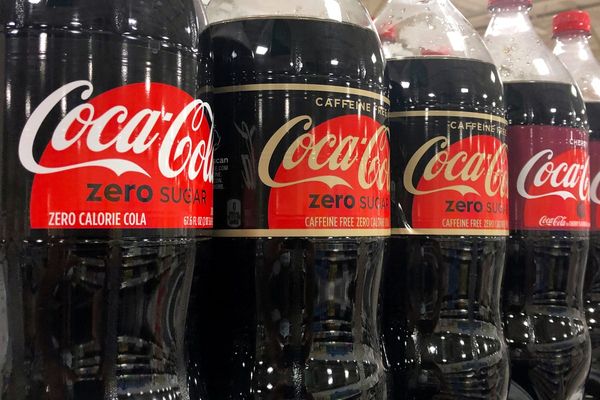The rapper and Yorta Yorta man Briggs says he was aiming to “debunk the comments section” with his viral video on the voice to parliament referendum, adding it has struck a chord because Australians respond well to humour.
The skit, which Briggs said had been viewed more than 5m times, was written by Freudian Nip’s Jenna Owen and Victoria Zerbst and directed by Australian film-maker Nash Edgerton. It was not created or funded by the official yes campaign.
In the three-minute video posted on Thursday, Briggs is at the pub with Owen and Zerbst when the comedy duo bring up the “whole voice referendum thing” and say to Briggs that it is “hard and complicated”.
Briggs responds to various claims put up by those opposed, before he simply asks the pair: “Have you Googled it?”
The video has cut through the referendum debate, going viral on social media this week. The director and New Zealand actor Taika Waititi, US actor Jason Momoa and Australian comedian Celeste Barber were among those who shared the video on their Instagram pages, attracting hundreds of thousands of likes.
Briggs told Guardian Australia from backstage at his Now & Forever concert in Shepparton that the reaction to the video was “crazy”.

Briggs said he approached Edgerton with a simple goal. “I said, ‘I want to debunk the comments section. I’m sick of having these arguments. We need to address that. We need to address the comment section,’” Briggs said.
“I didn’t see anything poignant undoing the misinformation. Everything was just, ‘Vote yes for equality.’ We’ve got to get it out of the bureaucracy, the muddy cloudiness of parliament. It’s boring. We need to do something fun. That’s how it came about.”
Asked why he thought it had struck such a chord, especially with young people, he replied: “Australians respond well with humour. We’ve got a good sense of humour as a country.”
“We’re talking in their language, of [the younger] generation,” Briggs said. “These are the conversations people are having, in their lounge rooms, in pubs, at sporting events. It’s not a big leap for them to see a conversation like that.”
He summarised the core message of the video as simply, “Google it”, and praised Owen and Zerbst as “so funny, so sharp”, with their original script barely changing from a draft.
“They came to me and were like ‘change it how you want’. I said I’d change my bit, put it in my language and how I talk, but you guys [Jenna and Vic] have to be talking to your audience, because that’s who we need to reach, otherwise we’re preaching to the converted,” he said.
“Thanks to the Polynesian brothers holding it down,” he said of Waititi and Momoa helping to spread the message.
Campaign strategist Dee Madigan told Guardian Australia the success of the video was having “essentially a negative ad” with a humorous spin.
“Funny stuff gets shared outside the bubble,” she said.
“It actually rings true for the experiences people have had, that people who say all the reasons why they’re not going to vote yes. They’re mirroring them back on people, but in a gentle, humorous way, which is really important because you don’t want to get people’s backs up.”
Madigan said it was a response video at the right time when people had heard the arguments against the voice.
“You couldn’t run this at the beginning,” she said. “[They would say] ‘I wouldn’t say that. I wouldn’t say that’. I think it’s great.”
The likes on the video across high-profile Instagram accounts that posted it added up to over 700,000 collectively.
The video had 885,000 views on YouTube and was trending at No 11 on Friday afternoon. Meta does not release such data meaning it was not clear how many times the video had been seen on Facebook or Instagram.
On TikTok, the video had over 230,000 views and nearly 6,000 shares. Yes23’s best-performing video on TikTok, by comparison, had had 385,000 views and been up since 10 August.

Briggs did not post the video directly to X, the platform formerly known as Twitter, which would have given direct video impressions, but his tweet of the YouTube link had close to 200,000 impressions and 1,261 retweets as of Friday afternoon.
Madigan said the yes campaign overall had won in terms of engagement on Instagram, but not on TikTok, which she put down to the TikTok algorithm “rewarding negative information”. The “For You” page algorithm on TikTok determines what content a user sees based on factors such as location and how users engage with the content.
“I think the yes [campaign] might have banked the youth vote a little early and just assumed that young equals progressive,” she said.
The rapper said his interest and advocacy for the voice was about more than the constitutional change itself – but what the broader conversation represents.
“If you watch my interviews, I don’t even talk about the voice. It’s not about the voice. People aren’t talking about the voice. They’re talking about whether or not they’re voting for black fellas,” Briggs said.
“That’s the elephant in the room nobody wants to address, that’s what’s on the table. Referendums are about principle. That’s the principle of the question … First Nations people, Aboriginal people, Indigenous people, whether you value us.”







